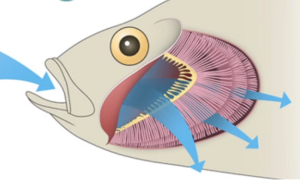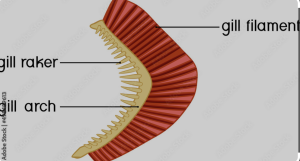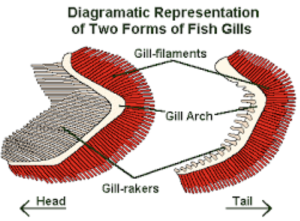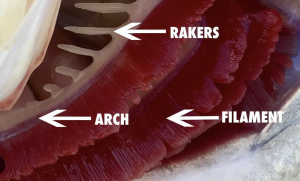I’m now quite far into writing a new book, called “The Science of Fishing”. One of the more interesting topics is how fish eat. This may seem either arcane or inconsequential, but imagine that you were a fish trying to capture a minnow that you caught up to under water. You would open your mouth, and the minnow would be sucked in along with a batch of water. Then in order to keep the minnow in your mouth in order to swallow it, you would have to close your mouth on the fish. But as you close your mouth, the water that you took in while inhaling the minnow would squirt out (along with the minnow) because water is incompressible. How does a fish do it?

For many years this was a mystery and frankly not very high on anyone’s research agenda, but now, after research studies mainly on largemouth bass, we have a pretty good idea on how they do it. The difference between a bass and us is that a bass has gill openings on either side of its head. When the bass opens its mouth, it creates a vacuum, sucking in both its prey and water. However, when the bass closes its mouth, it also opens its gill covers, and the water in its mouth squirts out through the open gill covers. Why doesn’t the fish that the bass ate also get squirted out through its gills? For that, we need to get into a bit of fish anatomy.

The primary purpose of a fish’s gills is respiration. Gills to a fish are like lungs are to us. As water passes over their gills, oxygen is removed from the water and brought into the fish’s bloodstream. A gill is somewhat chevron-shaped. The red part on the outside represents the fine gill filaments where oxygen exchange takes place. It is the white structures on the inside that are relevant to this article. These are called gill rakers. Their function is to prevent food that has been taken into the fish’s mouth from escaping through the gills. You can pretty much tell what a fish eats by looking at it gill rakers. Those that eat large prey have short stubby gill rakers whereas those that eat plankton have long, fine and closely-spaced gill rakers. The latter are a fish’s equivalent to baleen in krill-eating whales. As an aside, if you are cleaning a fish and its gills are red or dark pink, the fish is in good shape for eating. If the gill filaments are pale pink, the fish has probably been dead too long and is likely to taste fishy upon eating.


Back to our feeding bass, once the prey fish has been sucked into its mouth, the bass quickly closes its mouth and at the same time flares open its gill covers. The opening of its gill covers and letting water pass through is the mechanism for equalizing the water pressure in the fish’s mouth and not allowing the prey fish to escape when the bass closes its mouth. Not surprisingly, fish biologists call this mode of feeding suction feeding.
Two other types of feeding strategies have also been described. One is called ram feeding. Ram feeding consists of the predator fish rushing at its prey at a high speed from a few feet away and simply engulfing it. Even so, at the very end of the ram, the fish engages in a brief moment of suction feeding to be sure that the prey fish remains in its mouth. Basically, suction feeding is done for slow-moving prey and ram feeding for fast-moving prey. The third form of feeding, biting, is seen mainly in sharks, which often feed on creatures larger than themselves. With their razor-sharp teeth, they grab onto their prey and then violently shake their head, which tears off a large hunk of meat.
These modes of feeding have some practical applications to fishing. If you are fishing for bass, walleyes or pike with artificial baits, the fish usually strike hard at them. These hard strikes are due to ram feeding behavior. On the other hand, when fishing with live bait or, in the case of bass, with plastic worms or grubs, you often don’t feel much other than a slight tick but may see your line move. In this case, the fish is engaging in suction feeding, and as your bait is quickly sucked into the fish’s mouth, it is still basically just suspended in the water.
Because of the dynamics of producing suction in water, suction feeding can only occur at close range – just a few inches. Some of you may wonder why a sunfish has such a small mouth. It is because much of their food consists of suspended plankton or insect larvae, and they inhale such food through suction feeding. The smaller the mouth, the greater the intensity of the suction that can be produced. This suits the sunfish perfectly as they target slow-moving zooplankton.

